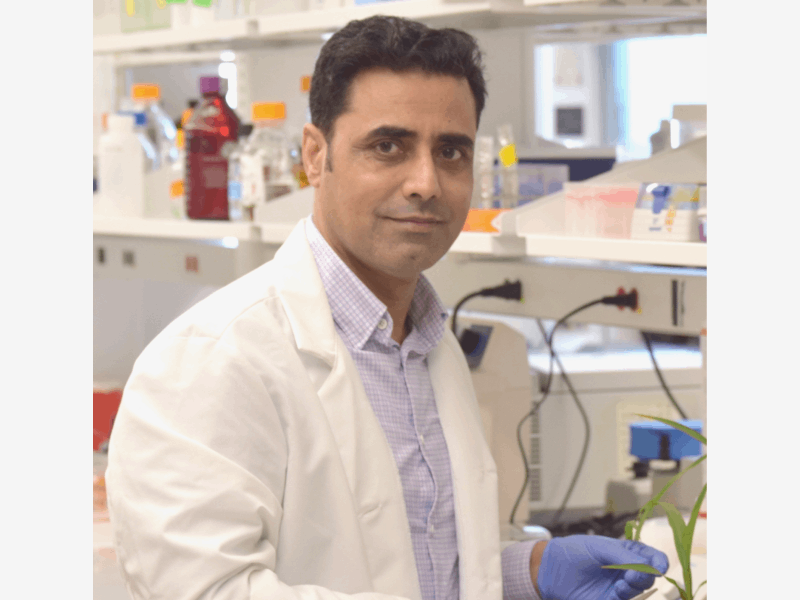Assistant professor of biotechnology Abdul Latif Khan recently worked in collaboration with researchers at the University of Houston as well as at University of Nebraska, California, and University of Nizwa in Oman to publish “Plastome structure, evolution and diversity of Frankincense-producing Boswellia genus” in the journal Functional & Integrative Genomics.
Boswellia trees — economically, culturally and medicinally significant — produce oleogum resin, also known as frankincense, which is used extensively in traditional Chinese, Ayurvedic and Arab medicines as well as in cosmetics such as essential oils, perfumery and skin care. In the wild, Boswellia trees also undergo hybridization, or crossbreeding, which creates distinct new tree types that can be difficult to differentiate both taxonomically and in terms of commercial production.
“To solve this, we created detailed genetic fingerprints for several types of frankincense tree species (from the Boswellia genus) by studying their complete chloroplast genomes,” said Khan. “This was important because it's often tough to tell these trees apart just by looking at them or even by analyzing their resins. They can look very similar and sometimes naturally hybridize, which leads to a lot of confusion about how many distinct species there actually are.
“For example, two major types, Boswellia sacra and Boswellia carteri, have been debated for years; are they the same species or different? By building a genetic library of these trees, scientists can now accurately identify them, which is crucial for their conservation, sustainable harvesting, and ensuring the quality and authenticity of the frankincense resin they produce.”
This research enables more targeted conservation efforts as well as the potential for greater quality control in consumer products by using genetic “barcodes” to identify product sources and targets. It also sets the stage for the methods to be applied to other plant families.
“This approach is a powerful tool for untangling the family trees of all sorts of plants, from crops and medicinal herbs to endangered trees, helping us understand, classify, and protect global biodiversity,” Khan added. “Genetic understanding can directly lead to practical solutions for cultivating these valuable trees. [This is] a great example of science directly supporting sustainability.”
This work also exemplifies the positive impact that the involvement of undergraduate students can have on key scientific knowledge. Recent biotechnology graduate Yetunde Williams, a contributor to this research, completed a two-semester Capstone research project and ultimately became part of the summer lab internship program with Khan through financial support from USDA-NIFA.
“Our interest comes from a combination of biology, chemistry, and cultural importance. Frankincense is not just a commodity; it's a part of human history, used for thousands of years in medicine, religion, and culture. We were fascinated by the mystery surrounding them. Why are they so hard to classify? We wanted to use modern genetic tools to solve these ancient puzzles.
“Furthermore, with concerns about over-harvesting and habitat loss, we felt a responsibility to help provide the scientific knowledge needed to ensure these incredible trees are around for future generations,” he said.
Going forward, the researchers also plan to work on analyzing the whole genomes of Boswellia species and related plants in the Buseraceae family to get a more complete picture of their evolutionary history. They also hope to connect identified genetic differences to practical traits, such as resin quality, to facilitate sustainable use for several different products developed from the tree.

